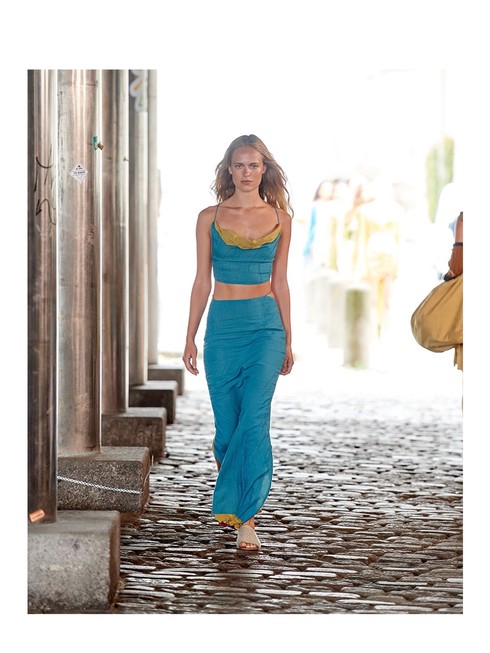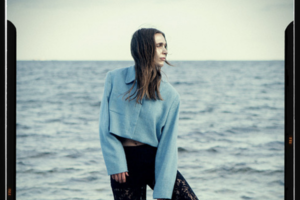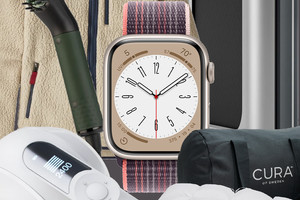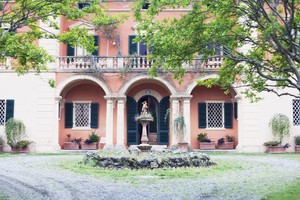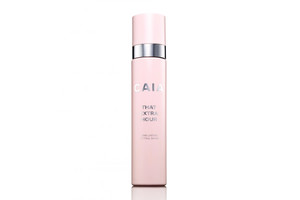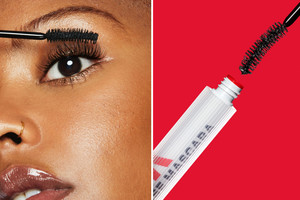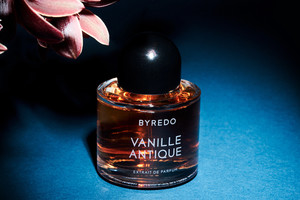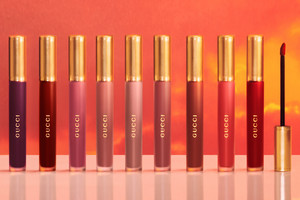Paintings for (f)all
Written by Art EditorThe art fall season is starting this week in Stockholm with several vibrant exhibitions featuring young painters from the local as well as the international scene. Often smaller in scale and with free entrance as opposed to exhibitions at the larger museums and institutions, gallery hopping is the perfect weekend delight open to everyone. Here are some of art editor Lina Aastrup’s picks for September.
“Runoff”
Anja Salonen at Loyal Gallery
August 17–September 10, 2023
Los Angeles born Anja Salonen (b. 1994) showers the viewer in watery references in “Runoff”, her first solo with Loyal Gallery. The dynamic paintings take their starting point in public water fountains, exploring water cycles and “the volatile relationship between waste and surplus”. The visual experience is striking with iridescent colours and warped, elongated silhouettes where the monumental and classicist meet digital imagery, sensuality and glitch.
“Figurative fountains became a tool for me to think about subject/object positions in representation–they’re both stone and body, inanimate and alive, stoic and kinetic. I stretched and elongated the figures digitally within their frames while planning the paintings so perspectival anomalies abound”, says Salonen.
About the artist
Anja Salonen studied at Rhode Island School of Design (RISD) in 2015 and received her BFA from California Institute of the Arts (Cal Arts) in 2018. Solo and two-person exhibitions include Arsenal Contemporary Art (with Miranda Byk) (New York), NOON Projects (with Ben Borden) (Los Angeles), in lieu (Los Angeles), Five Car Garage (Los Angeles).
“Undulations”
Patricia Treib at Galerie Nordenhake
August 24–September 23, 2023
In “Undulations”, Patricia Treib (b. 1979, US) examines the act of looking through an exploration of negative space – “an opening between a torso and an arm in a 16th century Greek icon painting, shards from a ruined farmhouse in Southern Italy, a 1940s Vogue sewing pattern envelope.”
Treib’s artistic process limits the time she spends on each canvas to one single day, similar to historical fresco paintings which required the artist to complete their work while the material was still wet. The eight paintings focus on life’s in-betweens by elevating ephemeral non-existence to physical presence, thus subverting the hierarchy of which objects and moments are inscribed in our collective memory through culture.
About the artist
Patricia Treib was born in Saginaw, Michigan, and lives and works in Brooklyn, New York. Recent solo exhibitions have been held at Galerie Nordenhake, Mexico City (2022); F, Houston (2021); Overduin & Co., Los Angeles (2021); Bureau, New York (2020); and Kate MacGarry, London (2019). Treib collaborated with Valentino’s Creative Director, Pierpaolo Piccioli, in his critically acclaimed autumn/winter 2021 Haute Couture collection, presented in the Arsenale di Venezia.
“The Minus World”
Tommy Sveningsson at Gallery Steinsland Berliner
August 18-September 23, 2023
Gallery Steinsland Berliner opens their fall season with The Minus World – an exhibition of new works by Swedish artist Tommy Sveningsson (b. 1982). Enigmatic winter sceneries executed in ink, charcoal, pastel and acrylic that draw upon contemporary themes while referencing classical landscape painting.
“The Minus World” glows with neon pink as the sun sets and vibrates with acid green at dawn. The artworks in the exhibition are situated at the very special time of year when rivers and lakes are freed of ice revealing the dark water beneath while the ground is still covered in a thick and heavy blanket of snow. (A scenery also favoured by Swedish painter Gustaf Fjaestad (1868-1948) on view in the permanent collection at Thielska galleriet in Stockholm.)
In the epic video game Super Mario Bros from 1985, the “minus world” is a hidden level transporting the player under water into a seemingly endless run parallel to the main game narrative. The existence of the minus world suggests alternative dimensions accessible to us through portals to the subconscious or transcendental states of mind.
About the artist
Tommy Sveningsson lives and works in Stockholm. He holds an MFA from Valand Academy (Gothenburg, SE). Previous exhibitions include solo presentations at Teckningsmuseet (SE) and Tegnérförbundet (NO) among others. Accompanying the exhibition is a publication produced by Tommy Sveningsson in collaboration with writer Erik Lavesson. The publication exists in a limited number of 50 pcs available for purchase at the gallery.






